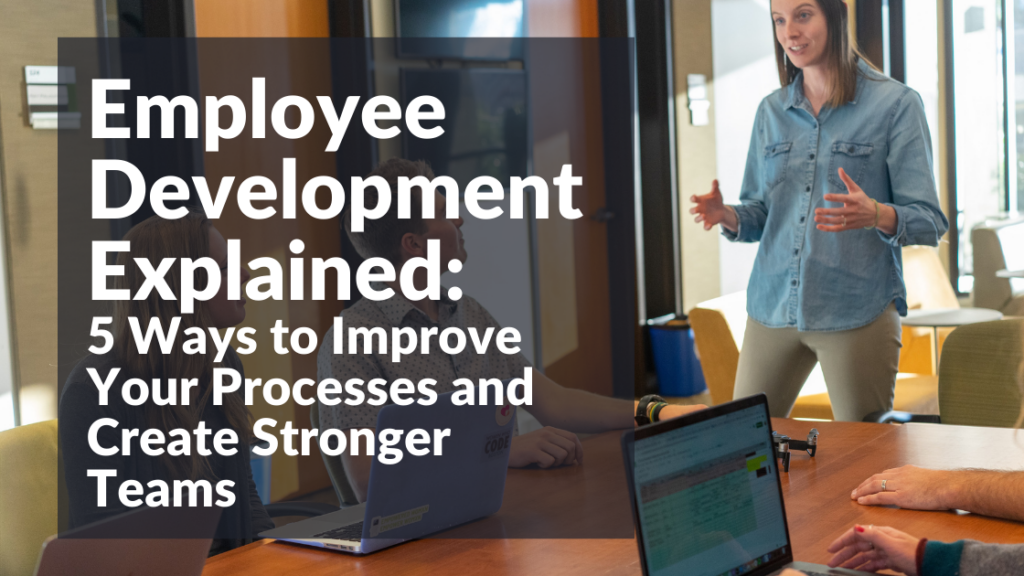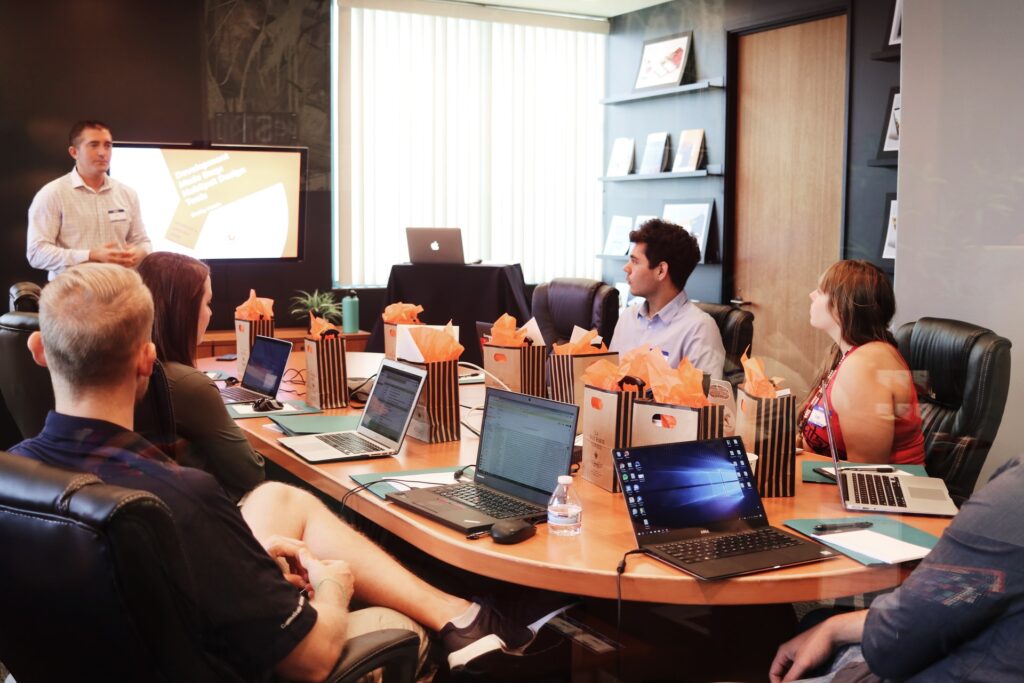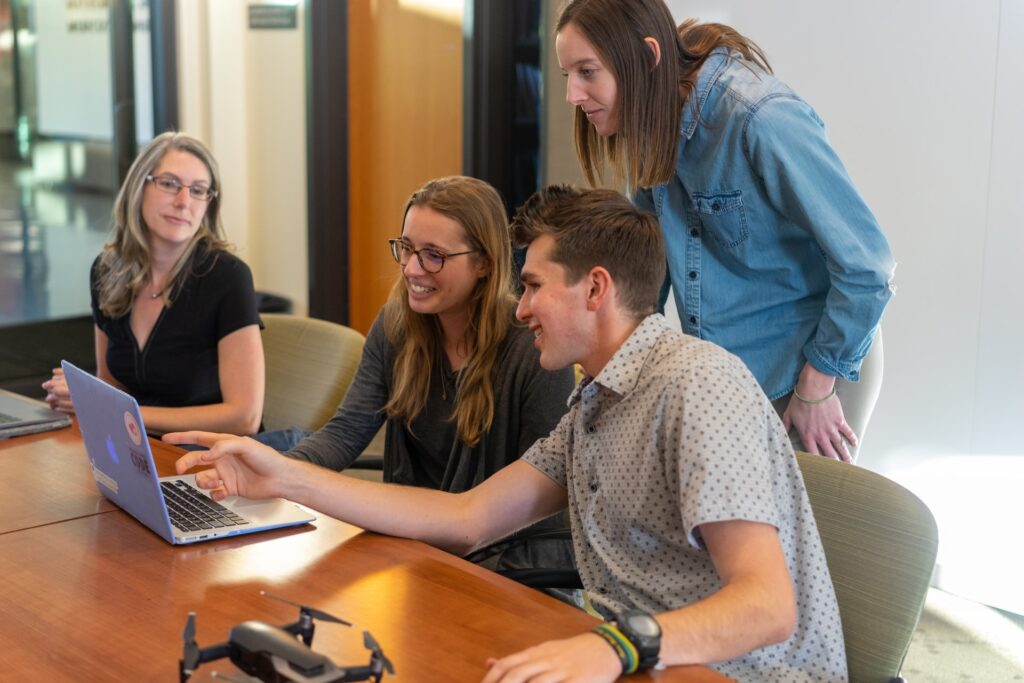Employee Development Explained: 5 Ways to Improve Your Processes and Create Stronger Teams

By proactively investing in employee development, you can ensure your team is happy and that they’re consistently providing value for your business. In this guest article from Rebecca DiCioccio, you’ll learn ways to improve your processes and create stronger teams.
Want your employees to continue providing value to your business?
That’s a question that’ll generally get a resounding ‘yes’ from organizations and leaders.
And the way to do it is to finetune your knowledge of employee development.
By getting proactive about employee development, you can help increase your employees’ productivity, boost motivation, and improve time management skills.
Here’s how to do it.
1. Ensure learning is accessible and continuous

When it comes to employee development, it can’t just be a one-time undertaking.
Learning needs to be continuous and accessible.
If learning is inaccessible or interrupted, your employees may feel deprived of the opportunity to grow in their careers and as individuals. They may feel as if their marketability is being diminished, and they won’t be able to see a future in their position.
Luckily, there are a few ways to ensure accessible and continuous learning.
Research
Find out how your employees are currently learning, what they like and dislike about the process, and how they feel it can be improved. You can use employee satisfaction surveys to do this.
Normalize and prioritize
Acknowledge the importance of allowing your employees to learn. It’s important to ensure that your employees are aware of this, so tell your team that you want to prioritize employee development.
Address every employee
Not everyone learns the same way or at the same pace, so employee development shouldn’t be addressed in a generic way. Instead, create personalized learning maps for each employee.
2. Focus on soft skills

Soft skills are skills related to how your employees work; they’re non-technical skills such as the way they communicate, how they manage time, and how they resolve conflict.
Focusing on these skills is important because they play an integral role in how employees provide value to your business.
If your employees have good communication skills and have high emotional intelligence, they can talk to customers (and help improve customer experience) and to each other more effectively.
This means that they will be better equipped to deliver messages, present ideas, and avoid unnecessary misunderstandings.
Encourage employees to refine soft skills
Provide opportunities for all employees to apply their soft skills. This can include group skills training workshops, and there are a ton of great options available.
Here are just a few of them.
Conflict Resolution
With a training and development program like Clear Communication, your team can learn to hone their verbal and written communication skills, learn to interpret and understand non-verbal communication signals, and enhance the way they communicate during conflicts and decision-making.
Clear Communication
With a session like Clear Communication, you can develop your team’s overall communications abilities. This session teaches employees to hone their verbal and written skills, learn non-verbal communication signals, make their presentations more impactful, and communicate effectively during conflicts and decisions.
Emotional Intelligence
With the Emotional Intelligence (EQ) leadership training and development program, you can develop your team’s self-awareness and social skills. This includes increasing your self-awareness, learning how to self-regulate behaviors, developing better social skills for leadership, using emotionally intelligent motivators, and developing a greater sense of empathy.
You can also check out this article that dives into a step-by-step overview of how to develop emotional intelligence.
Allow employees to set the course
Don’t force or coerce them to learn soft skills. They need to be personally invested in a training session for it to be effective.
Focus on hiring people who are driven to learn
The majority of skills can be taught, from technical skills to soft skills. Therefore, when hiring, opt for people who are interested in learning over those who already possess technical skills.
And while hiring has become more complex since the onset of the pandemic, there are still a number of steps you can take to improve recruiting, interviewing, and onboarding new employees.
3. Facilitate cross-departmental collaboration

Cross-departmental collaboration is when multiple departments “join forces” and work together.
Usually, there’s a need for it when one department can’t solve a problem on their own. And if that problem is left unsolved, the department will fall apart—soon and little by little, so will the entire business.
It’s an important aspect of employee development because it creates trust and respect. It also encourages individual employees to take responsibility for their actions. And for departments, it fosters a sense of collective responsibility.
There are a few ways to get the best results from your cross-departmental collaboration.
Cultivate empathy
Encourage employees from multiple departments to familiarize themselves with each other’s work obligations. The idea is to allow them to have a different and inclusive perspective and be more understanding.
Set an example
Lead and initiate regular meetings. Encourage everyone to present their ideas during brainstorming sessions.
Celebrate the wins of all employees
Acknowledge everyone’s role in a project. And if that project is a success, host a mini-party or an interdepartmental mingling.
To learn more about how to do this, check out this list of ways that leaders can celebrate top performers.
Enlist Team Building Activities
Another great way to support cross-departmental collaboration is by using team building activities to support stronger interdepartmental bonds between colleagues. When teammates feel connected with one another and have closer personal bonds, they’re more likely to support one another and work collaboratively to achieve a common goal.
4. Encourage coaching and mentoring

Coaching and mentoring are “helping interventions”. They guide employees to grow as individuals. They also help offer clear definitions of work settings and roles to your employees based on an understanding of their approach in providing value to your business.
The benefits of coaching and mentoring? Priceless—both for your employees and for your business.
They teach an employee the “right” and better way to work. As a result, they increase an employee’s confidence in their own abilities, improve job satisfaction, and boost overall happiness.
Introducing mentoring can be done in a few simple steps:
- Introduce objectives: Let them know your goals and the exact measures you’ll take to achieve these. Be sure they fully understand your objectives and that they’re on the same page as you.
- Budget: Set aside money for the entire program.
- Formalize the program: Draw contracts or award certificates of participation, for example. Formalizing coaching and mentoring encourages them to take the program seriously.
5. Set goals and track progress

Setting goals results in better performance. In addition to energizing your employees, goals inspire confidence and tenacity. They also serve as the reason to deliver exceptional work.
To set goals as a business, be careful with the goals you set. Otherwise, you’ll be setting up your employees for failure. To avoid this, be sure these are SMART goals — goals that are specific, measurable, actionable, results-driven, and time-bound.
The work also shouldn’t stop there. While setting goals is advantageous, you’ll get nowhere with your goals if you don’t track your progress.
So, what metrics can help you do so effectively?
Quality
The quality of your employees’ work determines the kind of value they provide to your business. So regularly, you need to review their output and provide feedback as you see fit.
Effectiveness
Effective employees can streamline work processes. With minimal supervision, they can satisfy your expectations and add value to your business.
Improvement
Determine if your employees are applying what they learned throughout their time with you. Assessing this metric will help you understand if they’re worth investing in.
Remember, it’s an investment you’ll be grateful for making later on. By investing in your employees, you’re also investing in your business.
Employee development is an important undertaking. And it’s vital that you create a mentally safe work environment for them.
By making them feel safe to ask questions, propose random ideas, and speak freely in any way, it supports positive employee development because it allows them to concentrate on their work and how they approach work. The safer they feel, the better they’ll work.
Learn More About How Team Building and Training Programs Can Help Support Employee Development and Wellbeing
For more information about how you can use team building and training to support employee development and wellbeing and support stronger teams, reach out to our Employee Engagement Consultants.
Author Bio:
Rebecca DiCioccio
Rebecca DiCioccio is a Marketing Manager for Paperform . Outside of work, Rebecca can be found exploring the outdoors, or with a book in hand. Rebecca’s background in copywriting and her keen interest in SEO and digital marketing mean she understands the importance of staying up to date with the latest trends in a dynamic and ever-changing industry.




Comments